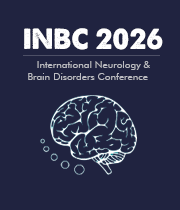Title : Bouchard aneurysm: A call for precaution in stroke treatment
Abstract:
Intracerebral hemorrhage is a worldwide cause of morbidity and mortality.1 Bouchard aneurysms represent a very small percentage of these cases. However, its appreciation and consideration of rupture due to volume overflow and hypertension must never be ignored. We present the case of a sixty-year-old male with ischemic acute stroke, right hemiplegia, dysarthria and NIHSS (National Institutes of Health Stroke Scale) of twenty-two points. Magnetic resonance demonstrated an anatomical variation of unilateral carotid formation with a left tandem occlusion (Video A and B). Patient underwent mechanical thrombectomy (MT) with solumbra technique (stent-retriever plus contact aspiration) and successful recanalization.
Twelve hours after the stroke, the patient can speak properly and move his four extremities without difficulty. To avoid future ischemic events, two days later patient enters the angiosuite again for stenting placement and full carotid revascularization, which turns immediately into a hypertensive crisis and provokes a massive left-hemispherical intracranial bleeding, conducting eventual decompressive craniectomy and death three days later. Bouchard aneurysm was found while reviewing retrospectively the images.
The present case illustrates Bouchard aneurysm significance, especially with stent associated flow changes. Despite its size, these aneurysms must always be intentionally looked for before any carotid stenting. As of today, it´s unclear how many days to wait for carotid stenting after MT. Tandem occlusion continues to be a challenge for the interventional practitioners, considering that up to 20–30% of patients with acute ischemic stroke have one2. Prospective studies may set the pathway for the best patient protocol to proceed with carotid stenting after MT and Bouchard aneurysms.




